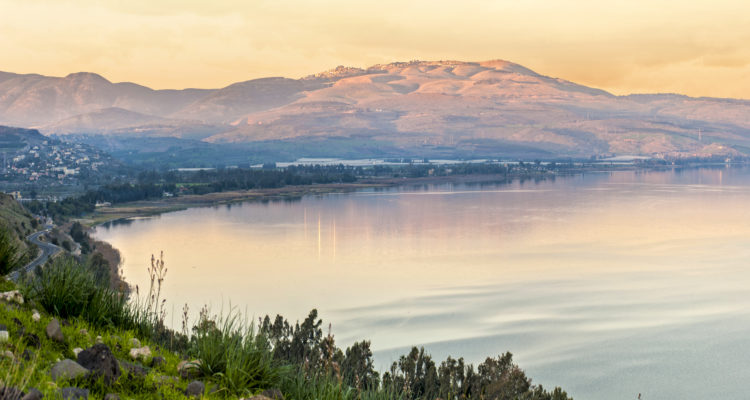Authorities consider opening dam as water levels continue to rise.
By Lauren Marcus, World Israel News
Thanks to a rainy winter, the Sea of Galilee’s waters have reached a 16-year high. The lake’s water levels are measured daily, and according to officials, reached a record high of 686.6 feet (209.275 meters) on Tuesday morning.
This marks the highest level recorded at the lake since July 2004, nearly 16 years ago. The Sea of Galilee, located in northern Israel, is the Jewish state’s largest source of fresh water.
As Israel’s typically dry spring season kicks off, heavy rainfall isn’t forecast for the foreseeable future. However, the lake’s water levels may rise further, due to melting snow from mountains in the Golan Heights, creating a major flood risk for the surrounding communities.
Authorities may open an emergency dam that will divert water from the Sea of Galilee to the Jordan River.
The Sea of Galilee’s water level currently stands at 18.7 inches (47.5 centimeters) below the “upper red line” of 685 feet (208.8 meters), the level at which authorities would consider overflow likely and decide to implement emergency measures.
Israel Water Authority spokesman Uri Schor told The Times of Israel last month that authorities were seriously considering opening the dam, located in Kibbutz Degania. Schor says there is a 50 percent possibility that the dam will be opened.
This development comes as a surprise after years of dangerously low water levels in the lake. Schor told the Times, “We get less and less rain on average in recent years, and before last year there were five years of severe drought, mainly in the north and the Sea of Galilee.”
Just two years ago, in 2018, the Israel Water Authority was concerned about the Sea of Galilee’s perilously low water levels, caused by a lack of rainfall.
At that time, the lake was near the “black line,” the level at which issues like low quality, silty water begin.





